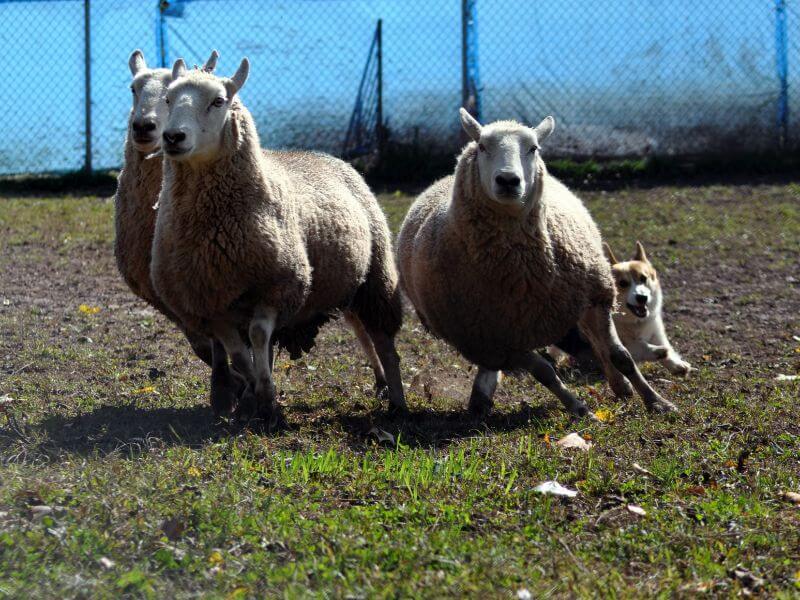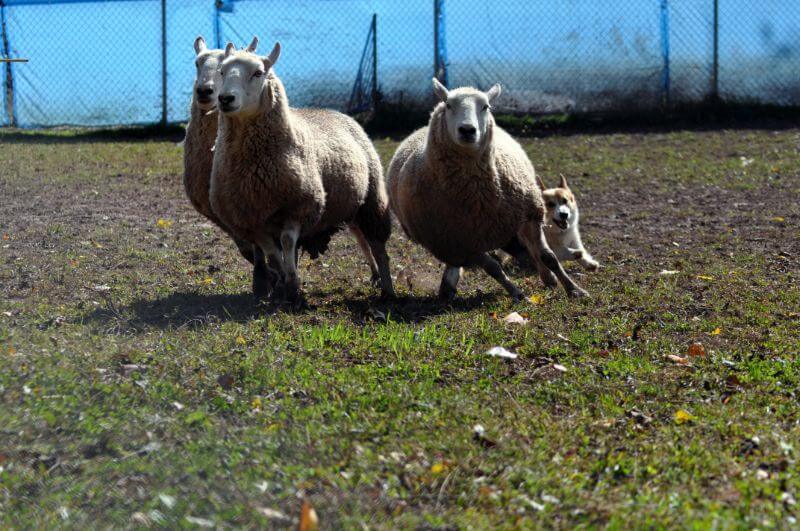
Home » The Herding Group – These Dogs Take Stock in Their Work

For thousands of years, farmers and ranchers, cattle rustlers and horse traders have worked alongside dogs with the ability to move, hold, and handle livestock of every imaginable kind. The agricultural industry around the world depends on the usefulness of these dogs even today, and it would not be hyperbolic to suggest that human civilization itself owes an enormous debt to these canine cohorts.
The breeds that comprise the AKC Herding Group represent an undeniable success story. Every one of the 32 recognized breeds (or varieties of a breed as determined by various national and international registries) was developed to perform a particular task on specific stock in a singular place at a definitive time in human history. From the Italian Alps to the Australian Outback, dogs with the ability to manage animals much larger and more dangerous than themselves have made it possible for people to thrive in settlements where extremes of cold and heat would otherwise make creating a “home” a hopeless endeavor.
The ancestors of today’s herding dogs were selected for their ability to transform their instinct to hunt into a need to herd. Over time and across continents, hunting became finding, where the end-game became barking not biting. Chasing developed into “casting,” and stalking was modified to become “walking up,” where dogs move in closer to control the stock, not consume it.
Herding dogs begin each day thinking about the work to be done. No coffee is needed to get them started, as they’re pre-wired to “go.” They love to run and chase, and many can be trained to “stand” and “come-bye,” where vocal signals (words and whistles) given by ranchers and shepherds instruct the dogs to stop or move clockwise around a herd or flock. These and other commands are used dependent on the specific need, as a reliable dog can move hundreds of sheep down a mountainside without losing a single ewe. Likewise, the right cattledog can move a 1200-pound cow without losing its life.

The dogs’ reward for all their hard work is the work itself, where spending each day out on the range or up in the hills delivered a daily dose of satisfaction. And owing to this adventurous and enterprising lifestyle, herding dogs have evolved an independence and intelligence that’s uniquely their own. Once they’ve been taught what’s expected of them, they have little problem showing up for work and getting the job done.
Without a doubt, herding dogs continue to fulfill the promise of their ancestors that helped to develop the global agricultural industry. From the Scottish Highlands, where the unmistakable Collie was used to mind local sheep, to the sands and summits of the Middle East, where the Canaan Dog has lived for millennia, guiding the shepherds’ flocks and guarding the homestead, the herding breeds continue to serve their original purpose. Many more, however, are kept as companions today, and among their ranks are some very high achievers.
Agility Trials see their fair share of Australian Shepherds and Border Collies, and Obedience Trials are familiar events for German Shepherd Dogs, Pembroke Welsh Corgis, and Shetland Sheepdogs. Disc Dog is all but dominated by the herding breeds, with Border Collies easily leading the way. Even Coursing Ability Tests have proven a fun way for a fast-paced herder to show off its functional form; Australian Cattle Dogs, Belgian Tervuren, and Swedish Vallhunds have all set aside livestock in favor of the lure—if only for the title earned.
The breeds of the Herding Group are willing workers, each and every one. Without livestock to attend to, they need to be kept busy with a job of some kind. Dog Sports will satisfy the need for many, and a lucky few get to go to work each day as police and military dogs, search and rescue dogs, or therapy and service dogs. But when they’re not given a job to do, these dogs will gladly invent one of their own. To these purebreds, herding children can be satisfying enough.
